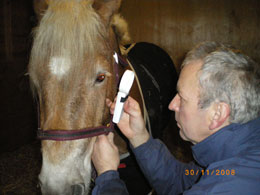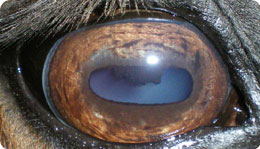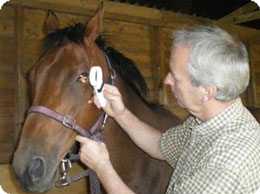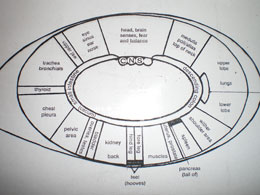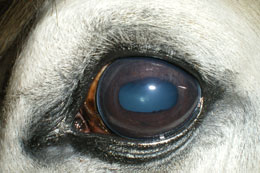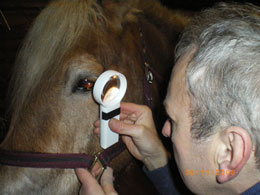Horses with a bright and shining eye are said to be in good health where as those with a dull and listless eye are said to be in poor health. Iridology goes a step further, enabling horse owners to discover what is happening inside their horse’s body. It is a safe, non-invasive and inexpensive diagnostic science, a method of analysis that can be integrated into both orthodox and complimentary medicine. Iridology compliments all therapeutic sciences because it provides vital information needed in order to establish the root cause of ailments, thus giving guidance for appropriate treatments.
Iridology is a study of the iris which is used to identify specific problems or weaknesses. The iris maps chemical changes in the body and records conditions of body tissue. Changes in the iris can occur before a problem manifests itself enough to be detected by ‘conventional’ methods, enabling the problem to be treated before it results in illness or lameness..
Genetic strengths and weaknesses, levels of inflammation and toxicity, the efficiency of all the eliminative organs all build up a picture of both current health status and predispositions..
The iris is an extension of the brain, remaining connected via the optic nerve and optic anthalami, and the sympathetic and para-sympathetic nervous system. The iris is endowed with hundreds of thousands of nerve endings and a study of the eye through nerve endings linked to all parts of the body, can indicate problems in specific organs. The cell structure in the eye changes in response to the cell structure in any organ in the body changing, reflecting the health of that organ. The iris reveals changing conditions of every part and organ of the body. Every organ and part of the body is represented in a defined area in the iris. The markings and colouration in the iris change as the condition in the body tissue changes. The trained iridologist sees the exposed nerve endings as a map revealing information about the body.
Iridology is a universal language, common to all living things, it provides valuable information to establish and monitor movement towards disease but does not reveal specific diseases because many diseases cause similar changes in the body. Iridology does not show natural processes such as pregnancy, neither does the iris show signs of operations as the use of anaesthetic cuts off all nerve feelings and telepathic recording of what is happening in the body..
Iridology is used worldwide and is already taught to medical students in certain European universities..
History
Iridology has been studied as far back as the Ancient Egyptians and Classical Greeks who used iris markings to tell the state of the internal body. In the 17th, 18th and 19th centuries, writings and works on iris markings and their meanings were recorded mainly by medical practitioners..
Phillipus Meyens wrote the first published analysis of the iris in 1670 however the development of iridology is credited to Dr Ignatz von Peczely, a Hungarian doctor who qualified in medicine at the Vienna Medical College in 1867, he updated the iris map and wrote a study and guide to diagnosis from the eye in 1881..
Other founders of iridology were Nils Liljequist, a Swede who presented his iris chart in 1893 and Dr Henry Lane from Illinois who published his book “Iridology. The Diagnosis from the Eye” in 1904..
Assessment
The length of time it takes to complete an assessment varies depending on the findings. A report is given to the client giving a full explanation of the findings..
Mark travels to different locations across the country and there is a set price per assessment. If travelling a distance, the number of horses to be seen at any one visit/venue determines whether an additional travelling fee will be charged.
For more information please contact us.


